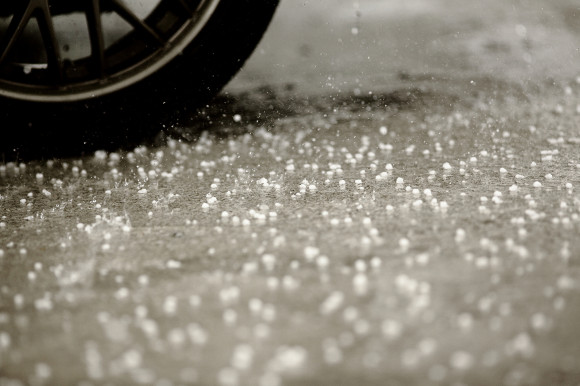Hailstorms inflict billions of dollars in damage yearly in North America alone, and the cost will rise as the growing population builds more homes, offices and factories, according to climate and weather experts who spoke at a conference in Colorado on Aug 14.
The role of climate change in hailstorms is harder to assess, the experts said at a conference at the National Center for Atmospheric Research in Boulder.
Climate change will likely make large hailstorms worse, but population growth is more of a certainty, said Andreas Prein, a climate modeling scientist at the atmospheric research center.
“We know pretty certain that we will have more people in the future, and they will have more stuff, and this stuff can be damaged,” Prein said. “I think this component is more certain than what we can say about climate change at the moment.”
This year is expected to be the 11th in a row in which the damage from severe storms exceeds $10 billion in the United States, and 70 percent of that cost comes from hail, said Ian Giammanco, a research meteorologist for the Insurance Institute for Business and Home Safety.
“It’s such a huge driver of the dollar loss each year,” he said.
Costs are rising in the U.S. because homes are getting bigger, from about 1,700 square feet (139 square meters) in the early 1980s to 2,500 square feet (232 square meters) in 2015, he said. New subdivisions also pack homes in more tightly, Giammanco said.
“So it’s a bigger target for hailstorms to hit,” he said.
The effects of climate change on hail and the resulting damage are harder to calculate because hailstorms require distinct ingredients, and global warming affects them in different ways, Prein said.
To form, hailstorms require moisture, an updraft, variable winds and freezing temperatures at lower levels of the storm cloud, he said.
Updrafts lift water droplets into the clouds, where they attract other droplets and freeze together, scientists say. Winds of varying speed and direction keep the droplets suspended in the cloud long enough to grow into hailstones. When they eventually fall, freezing temperatures in the cloud keep them from melting before they hit warmer air closer to the ground.
Climate change will likely increase updrafts, helping hailstones form, Prein said.
But it will inhibit two hail-producing conditions, he said. Warmer temperatures will expand higher into the atmosphere, so falling hailstones have more time to melt before hitting the ground. And differences in wind speed and direction will subside, he said.
Climate change will make the atmosphere more moist, but the effect that will have on hailstones isn’t clear, he said.
Kristen Rasmussen, an assistant professor at Colorado State University, said the combined effects of climate change will probably inhibit the number of weaker storms but increase the number of severe ones.
“So we actually think that’s why we’re seeing a decrease in the number of weak to moderate storms and an increase in the most severe storms,” she said. “If those storms are able to break through this inhibition, they … have the potential to be more severe, and they can tap into more energy when they do so.”
The researchers said they need more data to understand the relationship between climate change and hailstorms. Improved science could also help predict hailstorms and calculate risks better, they said.
The Rocky Mountains of Colorado, the Andes in South America and the Himalayas all have conditions that make them hotspots for hail, Rasmussen said.
A May 2017 hailstorm in the Denver area caused $2.3 billion in insurance losses. Last week, hail injured 14 people in Colorado Springs and killed at least five animals at the city zoo. Damage estimates were still being compiled.
Organizers said the three-day hail workshop was the first of its kind in the United States. It was sponsored by the National Science Foundation, Insurance Institute for Business & Home Safety, and Building Envelope Consultants Ltd.
Topics Catastrophe Trends USA Climate Change
Was this article valuable?
Here are more articles you may enjoy.



 Alliant Latest to Sue Howden US Over Alleged ‘Smash-and-Grab’ Poaching
Alliant Latest to Sue Howden US Over Alleged ‘Smash-and-Grab’ Poaching  New York Governor Hochul Vows to Tackle Insurance Affordability, Litigation and Fraud
New York Governor Hochul Vows to Tackle Insurance Affordability, Litigation and Fraud  Adjusters Launch ‘CarFax for Insurance Claims’ to Vet Carriers’ Damage Estimates
Adjusters Launch ‘CarFax for Insurance Claims’ to Vet Carriers’ Damage Estimates  Warburg Mulls $1 Billion Sale of London Insurance Broker McGill
Warburg Mulls $1 Billion Sale of London Insurance Broker McGill 

